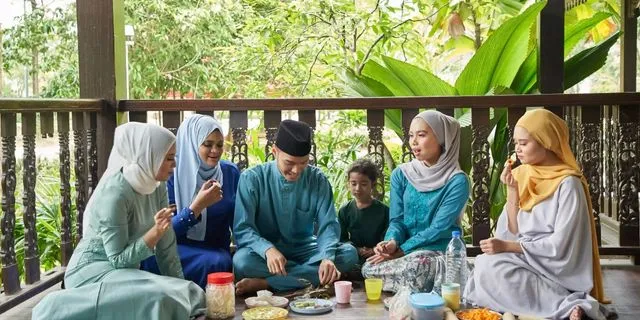“Selamat Hari Raya!”
This is the most common greeting that Muslims in Malaysia use with utmost joy in their heart. Muslim or not, you might be able to guess on what occasions Muslims tend to remain in the most joyous mood!
Yes, Ramadan is knocking on our doors, and it is almost time to get prepared for the festivals.
After the month of holy Ramadan, Hari Raya Puasa (the festival of Eid al-Fitr) takes place, which is Islam’s biggest religious festival. Then comes Hari Raya Haji (the festival of Eid al-Adha), which is the second biggest religious festival for the Muslims. It is celebrated after more than two months following Hari Raya Puasa.
Here’s what you need to know about the two festivals, and why they are different!
1. What is Hari Raya Puasa?

The term ‘Hari Raya’ is in Malay. It means ‘day of celebration’ or ‘grand day of rejoicing’ in English. Hari Raya Puasa marks the first day of Shawwal, the tenth month of the Hijrah (Islamic) calendar. It is an occasion to celebrate, following a month of fasting — Ramadan.
The moon-sighting committee determines its date and declares it worldwide when they can see the moon. It is decided according to the Islamic calendar.
2. What is Hari Raya Haji?

In Malaysia, Hari Raya Haji is named after the Muslim festival called Eid al Adha. It means the ‘festival of sacrifice’. This occasion is also known as ‘Hari Raya Korban’.
When the moon-sighting committee finds out the first day of Dhu al-Hijjah (the month of the pilgrimage), the exact date of Raya Haji gets revealed. This festival marks while Mecca is open to pilgrims performing their Hajj annually. In the Islamic lunar calendar, it is celebrated on the tenth day of Dhu al-Hijjah.
3. What are the differences?
Although Muslims start celebrating both festivals by going together at mosques to pray Salah, the two festivals are completely different. Here are the differences at a glance:
| Occasions | Hari Raya Puasa | Hari Raya Haji |
| Meaning of the name | Puasa means ‘fasting’ | Haji means ‘pilgrim to Mecca’ |
| Objective | To break the fast, practice forgiveness and build connections between friends and family. | To acknowledge the prophet Ibrahim’s (as) readiness to sacrifice his son Ismail (as) to Allah as a sign of obedience. |
| Time | The first day of Shawwal (when the Ramadan ends) | The 10th day of Dhu al-Hijjah (about two months post Hari Raya Puasa) |
| Way of celebration | After finishing the morning prayer at the mosque, Muslims visit friends and relatives wearing new/clean clothes to greet and spread happiness. | After finishing the morning prayer at the mosque, Muslims sacrifice sheep/lambs/other livestock in the name of Allah. The meat from the slaughtered animal is then divided and distributed in three parts: one-third for the family, one-third for relatives, and one-third for the needy. |
| Also known as | Eid al-Fitr (Festival of Breaking the Fast) | Eid al-Adha (Festival of the Sacrifice) |
So now there is no reason to get confused about the festivals. Both are very different.
Muslims of Malaysia eagerly wait for Raya Puasa and Raya Haji. This year will not be of any difference. They will celebrate it with all their heart by thanking the almighty, wearing desired outfits, preparing excellent dishes, exchanging gifts and what not.
Get ready to enjoy the vacations and strengthen your bond with your family!
IQI is constantly expanding! With a positive working environment that encourages continuous growth, joining us as a real estate negotiator might be your best choice. Drop your details below!



